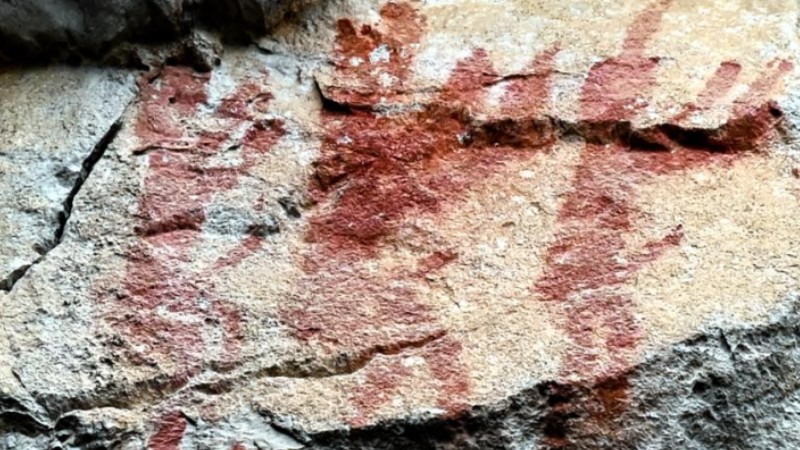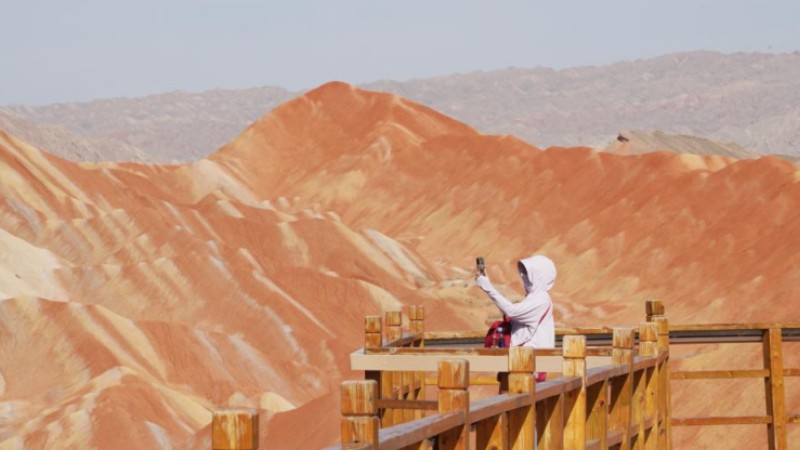Xinjiang tour guide's endeavor to protect cultural heritage
URUMQI, Aug. 11 (Xinhua) -- Tursunhan Hujaahmat, a Uygur tour guide, holds a unique bond with water. She works in Turpan City of northwest China's Xinjiang Uygur Autonomous Region and always reminds visitors from home and abroad of the importance of every single drop of water.
In Turpan, often dubbed China's "land of fire," water is particularly a valuable resource. The average annual precipitation here is only 16 mm, while the evaporation rate measures about 3,000 mm. Despite such dry weather, the place is never a barren land. Instead, it is flourishing with large oases and numerous vineyards.
Whenever curious visitors inquire about this, Tursunhan, who works with Turpan Karez Paradise, a museum site dedicated to Karez wells, replies with pride that the key to the region's prosperity lies in the unique Karez wells.
Tursunhan's ancestors, and people of other ethnic groups in Xinjiang, developed the Karez wells thousands of years ago, providing the local people with a steady flow of water for drinking and irrigation.
"It's our fountain of life," Tursunhan said.
A Karez well consists of a vertical shaft connected to underground channels that surface in the form of ditches and small ponds. The channels are supplied with water from the melted ice and snow in Xinjiang's Tianshan Mountains, while the underground structure of the wells prevents water from evaporating.
Spanning over 5,000 kilometers across Xinjiang, the Karez wells ingeniously transport water from deep underground to the surface. Regarded as one of China's most remarkable historical feats, these wells join the ranks of esteemed man-made structures such as the Great Wall and the Grand Canal.
Every day, Tursunhan leads visitors of the museum down to a Karez well, navigating through the winding underground channel, telling them about the history and construction process of the well. As they walk along a glass trail, cool and clear water flows beneath their feet.
"An underground channel of Karez well is usually at least three kilometers long, and every channel was dug by hand," she told the surrounding visitors.
"In old times, workers had to kneel to dig the mud in the cramped and dark underground channels, with their legs immersed in the icy water. Many workers suffered from rheumatism as a result," she said. "They used kantuman, a kind of hoe and shovel used by Uygur people for digging. One strike only dug down a nut-size amount of mud. We can only imagine how long it had taken to dig several kilometers."
"So, we ought to value even more the water that has been acquired through the blood and sweat of the workers," she added.
Working as a tour guide for 19 years, Tursunhan holds a unique passion for Karez wells, largely because of her father.
"My father volunteered to dig the wells. He died at his post. His rope broke when he was lowering himself down in a vertical shaft. I was five at that time," Tursunhan said.
However, the tragic experience didn't dampen her enthusiasm. "At first, I found it hard to work here, for it's a place full of sad memory. But later I realized that the spirit of my father and other workers needed to be inherited," she added.
For centuries, the wisdom embodied by the Karez wells has sustained and enriched the lives of the local people. However, several decades ago, due to the pressures of modern irrigation and pumping practices, some of the wells dried out.
The number of the wells dropped to around 270 in 2009 from over 1,200 during its peak time, according to Gupur Nuridin, vice secretary general of Xinjiang Karez Research Association.
Subsequently, these wells underwent a resurgence through diverse interventions and the active involvement of local residents, yielding impactful results. As of 2022, a total of 165 wells in Turpan had been successfully rejuvenated and reinforced.
The volume of water flow of Miyimu Bay Karez well, which passes through the Turpan Karez Paradise, has increased from 90 liters per second in 2014 to 240 liters per second in 2021, Gupur Nuridin said.
While Tursunhan didn't physically partake in well excavation or direct recovery efforts, she is striving to preserve the precious legacy through her own unique contribution -- telling more people the story of Karez wells and creating awareness about the importance of saving the painstakingly procured water.
She said she hopes that her efforts will ensure the enduring vitality of the Karez wells and that the stories will reach a broader audience, thus perpetuating the essence and legacy of past generations.
"The spirit will pass on, generation by generation, just like the water in the underground channels never stopped flowing," said Tursunhan, adding that her daughter is also working as a tour guide in Turpan Karez Paradise.
Photos
Related Stories
- Local melon from NW China's Xinjiang gains nationwide popularity
- China to launch national survey of cultural heritage sites
- Dominica's diplomat: Western media reporting on Xinjiang false
- Foreign envoys witness Xinjiang's vibrant life, development in visit
- "The Red Detachment of Women" performed during 6th China Xinjiang Int'l Dance Festival
Copyright © 2023 People's Daily Online. All Rights Reserved.









